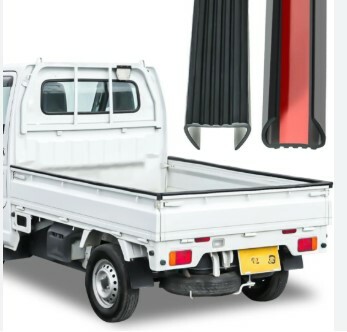Notifications
ALL BUSINESS
COMIDA
DIRECTORIES
ENTERTAINMENT
FINER THINGS
HEALTH
MARKETPLACE
MEMBER's ONLY
MONEY MATTER$
MOTIVATIONAL
NEWS & WEATHER
TECHNOLOGIA
TV NETWORKS
VIDEOS
VOTE USA 2026/2028
INVESTOR RELATIONS
COMING 2026 / 2027
ALL BUSINESS
COMIDA
DIRECTORIES
ENTERTAINMENT
FINER THINGS
HEALTH
MARKETPLACE
MEMBER's ONLY
MONEY MATTER$
MOTIVATIONAL
NEWS & WEATHER
TECHNOLOGIA
TV NETWORKS
VIDEOS
VOTE USA 2026/2028
INVESTOR RELATIONS
COMING 2026 / 2027
About Me
 Subaru Parts
Subaru Parts Discover high-quality parts for your Subaru Sambar, designed to keep your mini truck running smoothly and efficiently.
Subaru Parts Jan 8 626 views 0 Comments 0 Likes 0 Reviews Subaru Sambar parts

The Subaru Sambar has captured the hearts of many drivers worldwide for its compact size, versatility, and reliability. From farmers to urban commuters, this kei truck and van offer solutions for a variety of transportation needs. However, like all vehicles, the Sambar requires regular maintenance and occasional upgrades. Identifying compatible Subaru Sambar parts is crucial to keeping your vehicle running smoothly. Below, we explore nine essential Subaru Sambar parts and discuss their compatibility with various models.
Subaru Sambar models come with a range of engines, including the older EN-series engines and the newer EF-series engines. Compatibility between parts such as pistons, camshafts, and cylinder heads depends on your vehicle’s engine type and year of manufacture. For instance:
EN07 Engine Parts: These are commonly found in Sambars produced before 1990 and are generally not interchangeable with newer EF-series engines.
EF10 and EF12 Engine Parts: Used in newer models, these parts may offer limited compatibility with older engines but are more suited for post-1990 Sambars.
Always verify your engine’s specific code to ensure you’re purchasing the right parts.
Air filters play a critical role in maintaining engine performance. Subaru Sambar air filters are relatively universal across most models, but some variations exist. The most common types include:
Panel Air Filters: Found in both early and modern Sambar models.
Cone Filters: These are often aftermarket upgrades for performance enthusiasts.
When buying a replacement, check your model’s year and specifications. Universal filters can fit multiple models but may require slight modifications.
The suspension system in the Subaru Sambar varies slightly between 2WD and 4WD models. Key suspension parts to consider include:
Shocks and Struts: The Sambar’s compact design means shocks and struts are model-specific. However, many aftermarket options cater to both older and newer models.
Springs: Compatibility depends on the model’s weight and intended load capacity. Standard springs from a 2WD Sambar may not perform optimally in a 4WD variant.
Consult your owner’s manual or a trusted supplier to ensure proper fitment.
Braking systems are critical for safety, and Subaru Sambar parts for brakes include pads, rotors, calipers, and drums. The following considerations apply:
Front Disc Brakes: Most later models feature disc brakes at the front, which are generally not interchangeable with older drum brake systems.
Rear Drums: Older Sambars rely on rear drum brakes, while newer models may feature upgraded systems.
Check whether your Sambar uses ABS, as this can impact parts compatibility.
The exhaust system not only reduces emissions but also influences engine performance. Subaru Sambar exhaust components include manifolds, catalytic converters, and mufflers. Key factors to consider:
Manifolds and Headers: These differ based on the engine type and model year.
Mufflers: While aftermarket options may fit various models, OEM mufflers are often specific to particular generations.
Custom exhaust setups can be adapted to older Sambars but may require professional installation.
Subaru Sambars feature manual, automatic, and CVT transmissions, depending on the model and year. Transmission parts such as clutches, gear sets, and axles vary in compatibility:
Manual Transmission Parts: Clutch kits and flywheels for 4WD models may not fit 2WD models.
CVT Components: Found in newer Sambars, these parts are often specific to the year and trim level.
Ensure you know your transmission type before ordering parts.
From alternators to wiring harnesses, electrical parts can be tricky due to variations across models and generations. Common parts include:
Starters and Alternators: While some alternators are interchangeable, older models may require specific units.
Lighting: Headlights, taillights, and indicators differ slightly between model years. Aftermarket LED options offer universal compatibility but may need adapters.
Double-check electrical specs, especially for older Sambars with unique configurations.
The cooling system ensures your engine doesn’t overheat, and its parts must be compatible with your model. Key components include:
Radiators: Size and mounting points vary between older and newer models.
Water Pumps: These are engine-specific, so knowing your engine code is crucial.
Consider upgrading to high-performance radiators if you use your Sambar for heavy-duty tasks.
Exterior parts like bumpers, mirrors, and doors often vary between generations. Key considerations include:
Bumpers and Grilles: Older models feature simpler designs, while newer Sambars may have more aerodynamic styles.
Mirrors: Universal aftermarket mirrors can fit most Sambars but may lack factory features like power adjustment.
When sourcing parts, verify the year, trim, and whether your Sambar is a kei truck or van model.
Check the VIN: Your Vehicle Identification Number (VIN) contains essential information about your model, including its year, trim, and engine type.
Consult the Owner’s Manual: This resource provides specific details about compatible Subaru Sambar parts.
Use Trusted Suppliers: Opt for suppliers specializing in Subaru Sambar parts to minimize errors in compatibility.
Join Online Forums: Communities of Sambar enthusiasts often share valuable insights and recommendations for sourcing parts.
Maintaining your Subaru Sambar requires attention to detail, particularly when sourcing compatible parts. From engine components to body panels, understanding the nuances of your model ensures you make the right choices. By following this guide and doing your due diligence, you can keep your Sambar running smoothly for years to come.

Comments